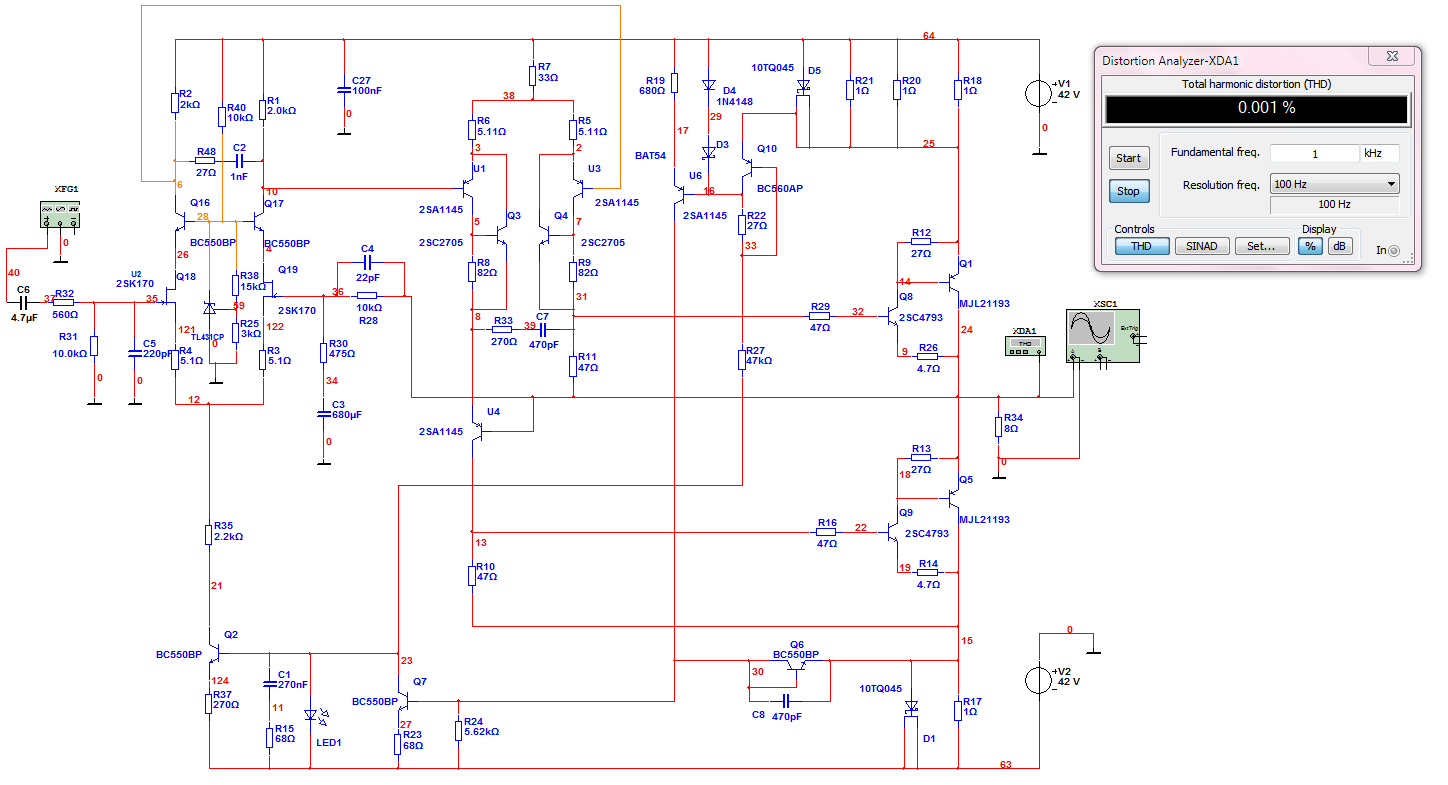Would the inverted JFET Circlophone be related to this type of topology? It's not class D but does have a sliding bias to always keep outputs switched on for class A operation without a a lot of wasted heat.
http://www.diyaudio.com/forums/solid-state/189599-my-little-cheap-circlophone-34.html

http://www.diyaudio.com/forums/solid-state/189599-my-little-cheap-circlophone-34.html

Did I missed it? I'm surprised the Devialet is not mentioned in this thread.
Devialet D-Premier D/A integrated amplifier Measurements | Stereophile.com

Devialet D-Premier D/A integrated amplifier Measurements | Stereophile.com

Actually I m thinking of can we use class D stage as voltage follower and parallel to class A circuit output?
Vanderkooy JAES 1979: 6 Error Feedforward in Class-D Amplifier
decades old idea: http://ddata.over-blog.com/1/74/30/05/Docs/feedForward.pdf
one of many refs in the 1st few pages of this thread
decades old idea: http://ddata.over-blog.com/1/74/30/05/Docs/feedForward.pdf
one of many refs in the 1st few pages of this thread
Last edited:
What the OP is talking of is a series topology.
The Vanderkooy example and Devialet are both parallel topologies but differing otherwise.
Devialet is not using feedforward error correction but a linear amp that is supported by a class D current source. One can find a lot of information on amps like that on the web when searching for Switch Mode Assisted Linear Amplifier (SMALA).
15 years ago I did lots of simulations with a topology that had some similarities. The current source was a delta sigma topology of low order. In the case of a first order loop the integrator simply consisted of the inductor alone. The simulation results were very good. It would have allowed good efficiency, high slew rates and low THD - in theory. But that doesn't say anything about how well it would work in practice.
Regards
Charles
The Vanderkooy example and Devialet are both parallel topologies but differing otherwise.
Devialet is not using feedforward error correction but a linear amp that is supported by a class D current source. One can find a lot of information on amps like that on the web when searching for Switch Mode Assisted Linear Amplifier (SMALA).
15 years ago I did lots of simulations with a topology that had some similarities. The current source was a delta sigma topology of low order. In the case of a first order loop the integrator simply consisted of the inductor alone. The simulation results were very good. It would have allowed good efficiency, high slew rates and low THD - in theory. But that doesn't say anything about how well it would work in practice.
Regards
Charles
- Status
- Not open for further replies.
